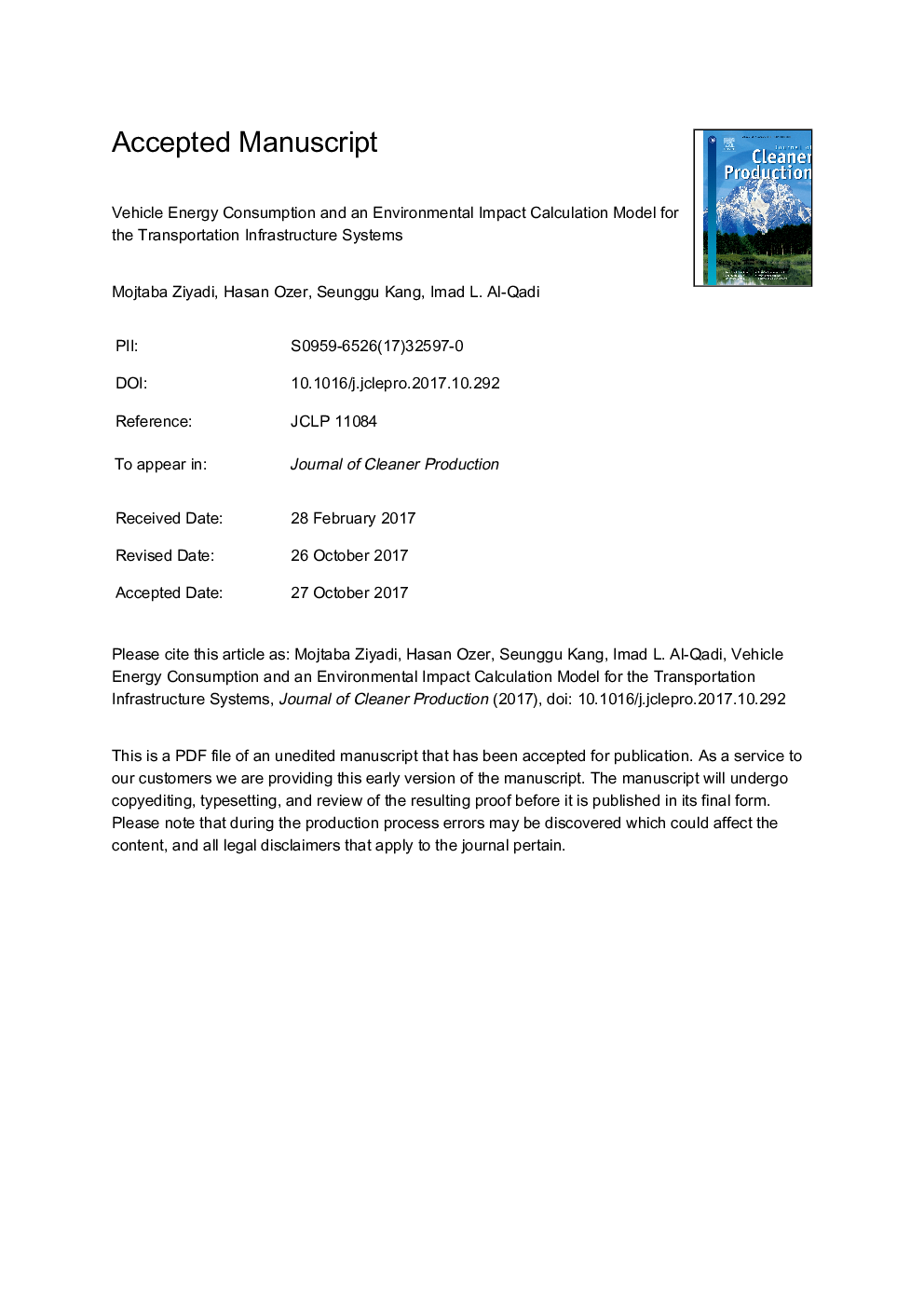| کد مقاله | کد نشریه | سال انتشار | مقاله انگلیسی | نسخه تمام متن |
|---|---|---|---|---|
| 8099459 | 1522079 | 2018 | 24 صفحه PDF | دانلود رایگان |
عنوان انگلیسی مقاله ISI
Vehicle energy consumption and an environmental impact calculation model for the transportation infrastructure systems
ترجمه فارسی عنوان
مصرف انرژی خودرو و مدل محاسبه اثرات زیست محیطی برای سیستم های زیربنایی حمل و نقل
دانلود مقاله + سفارش ترجمه
دانلود مقاله ISI انگلیسی
رایگان برای ایرانیان
کلمات کلیدی
موضوعات مرتبط
مهندسی و علوم پایه
مهندسی انرژی
انرژی های تجدید پذیر، توسعه پایدار و محیط زیست
چکیده انگلیسی
The interaction of vehicles and tires with various surface and structural features of roadways impact rolling resistance, hence fuel consumption of vehicles. Efficient interaction of vehicles with the roadway provides new opportunities to reduce transportation systems environmental impacts. A roughness-speed impact (RSI) model was developed to quantify the energy and environmental impacts due to vehicle-pavement interaction. The RSI model accounts for the additional rolling resistance of vehicles resulting from pavement surface properties measured in terms of smoothness as well as vehicle efficiency improvements over time. The model uses vehicle-specific power as a basis to develop the analytical equations for representing vehicle-pavement interaction. The proposed analytical model offers advantages for easy integration to LCA software to evaluate GHG reduction policies. According to the model, one unit change of IRI (63.36 in/mile) results in an average increase in fuel consumption of 3% and 2%, respectively, at high and low speeds (65 and 35 mph) for passenger cars. Heavier trucks are less sensitive to IRI change; and one unit change in IRI on average results in 2% and 1% increase, respectively, in fuel consumption of heavy truck at high and low speeds. This paper presents case studies to explore effectiveness of a short-term policy goal concerning with the management of roadway surface features. According to the LCA results with different scenarios of pavement management policies, while vehicle efficiency accounts for about 27% of the potential total energy savings, potential savings from pavement roughness can be up to 7%.
ناشر
Database: Elsevier - ScienceDirect (ساینس دایرکت)
Journal: Journal of Cleaner Production - Volume 174, 10 February 2018, Pages 424-436
Journal: Journal of Cleaner Production - Volume 174, 10 February 2018, Pages 424-436
نویسندگان
Mojtaba Ziyadi, Hasan Ozer, Seunggu Kang, Imad L. Al-Qadi,
